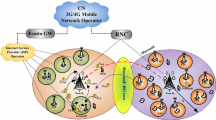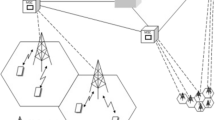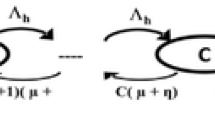Abstract
Four strategies designed to provide the advantage of the handover of calls are considered for the channel reservation in mobile cellular networks: dynamic redundancy, partial dynamic reservation, fixed reservation, and the limitation of the allowable number of new calls. The advantage of dynamic reservation is shown. For the case of two-channel systems with losses, this claim is rigorously proved.
Similar content being viewed by others
References
Yuguang, F., and Zhang, Y., Call Admission Control Schemes and Performance Analysis in Wireless Mobile Networks, IEEE Transactions on Vehicular Technology, 2002, vol. 51, no. 2, pp. 371–382.
Wang, X., Fan, P., Pan, Y., A More Realistic Thinning Scheme for Call Admission Control in Multimedia Wireless Networks, IEEE Transactions on Computers, 2008, vol. 57, no. 8, pp. 1143–1147.
Yilmaza, O., Ing-Ray, C., Elastic Threshold-Based Admission Control for QoS Satisfaction with Reward Optimization for Servicing Multiple Priority Classes in Wireless Networks, Information Processing Letters, 2009, vol. 109, no. 15, 16, pp. 868–875.
Author information
Authors and Affiliations
Corresponding author
Additional information
Original Russian Text © M.A. Shneps-Shneppe, Ya.Ya. Sedol, 2010, published in Avtomatika i Vychislitel’naya Tekhnika, 2010, No. 4, pp. 30–39.
About this article
Cite this article
Shneps-Shneppe, M.A., Sedol, Y.Y. A comparison of strategies for call admission control in mobile networks. Aut. Conrol Comp. Sci. 44, 208–215 (2010). https://doi.org/10.3103/S0146411610040048
Received:
Accepted:
Published:
Issue Date:
DOI: https://doi.org/10.3103/S0146411610040048




